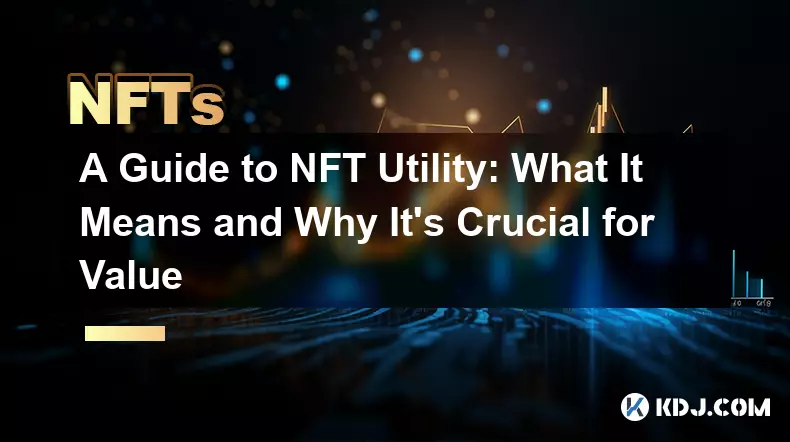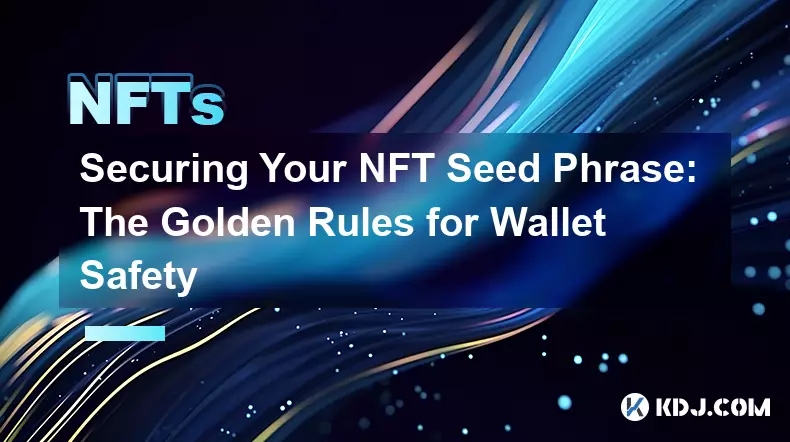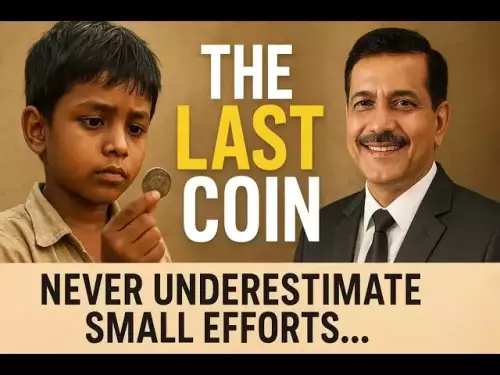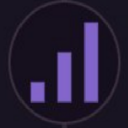-
 bitcoin
bitcoin $99177.955738 USD
-7.32% -
 ethereum
ethereum $3187.183061 USD
-12.38% -
 tether
tether $0.999809 USD
0.00% -
 xrp
xrp $2.117933 USD
-9.42% -
 bnb
bnb $906.710033 USD
-9.17% -
 solana
solana $149.367737 USD
-10.74% -
 usd-coin
usd-coin $0.999816 USD
0.01% -
 tron
tron $0.281498 USD
-0.38% -
 dogecoin
dogecoin $0.156292 USD
-8.00% -
 cardano
cardano $0.500744 USD
-10.19% -
 hyperliquid
hyperliquid $38.087358 USD
-4.58% -
 chainlink
chainlink $14.097831 USD
-8.54% -
 bitcoin-cash
bitcoin-cash $463.329916 USD
-9.22% -
 ethena-usde
ethena-usde $0.999078 USD
-0.01% -
 unus-sed-leo
unus-sed-leo $9.475862 USD
-0.79%
How to create and mint your first NFT?
NFTs are unique digital assets verified by blockchain, enabling creators to tokenize art, music, and more with proven ownership and scarcity.
Nov 05, 2025 at 05:54 am

Understanding the Basics of NFTs
1. An NFT, or non-fungible token, is a unique digital asset verified using blockchain technology. Unlike cryptocurrencies such as Bitcoin or Ethereum, each NFT holds distinct information that makes it irreplaceable and different from any other token.
- NFTs are typically built on blockchain networks that support smart contracts, with Ethereum being the most popular choice due to its robust infrastructure and wide adoption.
- The uniqueness of an NFT allows creators to tokenize digital art, music, videos, virtual real estate, and even tweets, giving them verifiable ownership and scarcity in the digital space.
- Metadata associated with an NFT includes details like the creator, creation date, edition number, and links to the digital file, often stored off-chain using decentralized storage solutions like IPFS.
- Ownership of an NFT is publicly recorded and traceable, enabling transparency and reducing the risk of forgery or duplication.
Selecting the Right Blockchain and Marketplace
1. While Ethereum dominates the NFT space, alternative blockchains like Solana, Polygon, and Binance Smart Chain offer lower transaction fees and faster processing times, making them attractive for new creators.
- Choosing a marketplace depends on the blockchain you select. OpenSea supports multiple chains and is beginner-friendly, while platforms like Rarible and Foundation cater to specific communities and artistic styles.
- Consider gas fees when minting on Ethereum; these can fluctuate significantly based on network congestion. Using Layer 2 solutions or sidechains can reduce costs substantially.
- Research each platform’s policies on royalties, moderation, and community standards to ensure alignment with your goals as a creator.
- Some marketplaces allow lazy minting, where the NFT is created only when purchased, shifting the gas fee burden to the buyer rather than the creator.
Creating and Minting Your Digital Asset
1. Begin by creating your digital content using tools appropriate to your medium—graphic design software for images, DAWs for audio, or video editors for moving visuals.
- Save your file in a supported format: JPEG, PNG, GIF, MP4, or WAV are commonly accepted, with size limits varying across platforms.
- Connect your digital wallet—MetaMask, Phantom, or WalletConnect—to your chosen marketplace. Ensure it contains enough cryptocurrency to cover minting costs.
- Upload your file to the platform, fill in metadata fields such as title, description, attributes, and unlockable content if applicable.
- Initiate the minting process by confirming the transaction through your wallet. This creates a smart contract entry on the blockchain, officially registering your NFT.
Marketing and Selling Your NFT
1. Share your NFT across social media platforms like Twitter, Discord, and Instagram to build visibility within crypto-native communities.
- Engage with collectors and artists in NFT-focused groups to establish credibility and attract potential buyers.
- Set a fixed price or opt for an auction model depending on demand and perceived value of your work.
- Offer utility or exclusivity—such as access to events, future drops, or membership perks—to increase the appeal of your NFT beyond mere aesthetics.
- Monitor analytics provided by the marketplace to understand viewer behavior and adjust pricing or promotional strategies accordingly.
Frequently Asked Questions
What file types are acceptable for minting an NFT?Most platforms accept common formats including JPEG, PNG, GIF, MP4, AVI, WMV, MOV for visuals, and MP3, WAV, FLAC for audio. File sizes usually range between 5MB to 100MB depending on the marketplace.
Do I retain copyright after selling my NFT?Selling an NFT does not automatically transfer copyright unless explicitly stated in the terms. In most cases, the buyer owns the tokenized version, but the creator maintains intellectual property rights unless otherwise agreed.
Can I mint an NFT without paying gas fees?Yes, certain platforms offer 'lazy minting,' allowing you to list an NFT for sale without upfront costs. The minting occurs when someone purchases it, at which point the buyer covers the gas fee.
How do I prove authenticity as an NFT creator?Verified profiles on major marketplaces enhance trust. Additionally, linking your social media accounts, maintaining a consistent portfolio, and engaging transparently with your audience reinforce your legitimacy in the ecosystem.
Disclaimer:info@kdj.com
The information provided is not trading advice. kdj.com does not assume any responsibility for any investments made based on the information provided in this article. Cryptocurrencies are highly volatile and it is highly recommended that you invest with caution after thorough research!
If you believe that the content used on this website infringes your copyright, please contact us immediately (info@kdj.com) and we will delete it promptly.
- Bitcoin's Wild Ride: Saylor, Kiyosaki, and the Quest for $200K
- 2025-11-05 10:50:13
- Culex, Cardano, and Aster: A Crypto Cocktail of Mosquitoes, Dips, and CZ Fuel
- 2025-11-05 11:00:17
- Crypto Presales, Coin Growth, and Established Coins: Navigating the 2025 Buzz
- 2025-11-05 11:00:17
- La Culex, Crypto Investment, and Pudgy Penguins: A NYC Perspective
- 2025-11-05 10:30:13
- Zcash Defies Crypto Crash: Reversal Risk on the Horizon?
- 2025-11-05 11:00:01
- Score Big with BetMGM: NBA, NFL, and the TOP150 Bonus Code
- 2025-11-05 08:50:13
Related knowledge

NFT Portfolio Tracking: The Best Tools to Manage Your Investments
Nov 04,2025 at 11:04pm
NFT Portfolio Tracking: Why It Matters in the Digital Asset Space1. The rapid expansion of the NFT market has made it essential for collectors and inv...

The Complete Guide to NFT Whitelists: Strategy for Gaining Access
Nov 03,2025 at 02:36pm
Decentralized Exchanges Gain Momentum in 20241. Decentralized exchanges (DEXs) have seen a significant rise in trading volume, surpassing centralized ...

Verifying NFT Authenticity: A Checklist to Avoid Fakes and Scams
Nov 01,2025 at 03:55pm
Understanding the Foundations of NFT Verification1. Every NFT is built on a blockchain, most commonly Ethereum, Solana, or Polygon. The blockchain pro...

Polygon (Matic) NFT Guide: Why It's a Top Choice for Low-Fee Trading
Nov 02,2025 at 06:36pm
Bitcoin's Role in Decentralized Finance1. Bitcoin remains the cornerstone of decentralized finance, serving as a primary store of value within the cry...

A Guide to NFT Utility: What It Means and Why It's Crucial for Value
Nov 01,2025 at 12:54am
Understanding NFT Utility in the Digital Economy1. NFT utility refers to the functional value that a non-fungible token provides beyond its existence ...

Securing Your NFT Seed Phrase: The Golden Rules for Wallet Safety
Nov 03,2025 at 09:54pm
Understanding the Importance of Your NFT Seed Phrase1. The seed phrase, typically a sequence of 12 or 24 words, acts as the master key to your digital...

NFT Portfolio Tracking: The Best Tools to Manage Your Investments
Nov 04,2025 at 11:04pm
NFT Portfolio Tracking: Why It Matters in the Digital Asset Space1. The rapid expansion of the NFT market has made it essential for collectors and inv...

The Complete Guide to NFT Whitelists: Strategy for Gaining Access
Nov 03,2025 at 02:36pm
Decentralized Exchanges Gain Momentum in 20241. Decentralized exchanges (DEXs) have seen a significant rise in trading volume, surpassing centralized ...

Verifying NFT Authenticity: A Checklist to Avoid Fakes and Scams
Nov 01,2025 at 03:55pm
Understanding the Foundations of NFT Verification1. Every NFT is built on a blockchain, most commonly Ethereum, Solana, or Polygon. The blockchain pro...

Polygon (Matic) NFT Guide: Why It's a Top Choice for Low-Fee Trading
Nov 02,2025 at 06:36pm
Bitcoin's Role in Decentralized Finance1. Bitcoin remains the cornerstone of decentralized finance, serving as a primary store of value within the cry...

A Guide to NFT Utility: What It Means and Why It's Crucial for Value
Nov 01,2025 at 12:54am
Understanding NFT Utility in the Digital Economy1. NFT utility refers to the functional value that a non-fungible token provides beyond its existence ...

Securing Your NFT Seed Phrase: The Golden Rules for Wallet Safety
Nov 03,2025 at 09:54pm
Understanding the Importance of Your NFT Seed Phrase1. The seed phrase, typically a sequence of 12 or 24 words, acts as the master key to your digital...
See all articles










































































